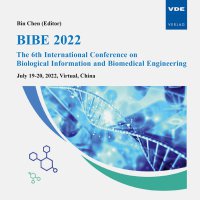Evaluating the sensitivity of biochips for detecting pathogenic bacteria based on tyramine signal amplification coupled with gold label silver stain
Konferenz: BIBE 2022 - The 6th International Conference on Biological Information and Biomedical Engineering
19.06.2022 - 20.06.202 in Virtual, China
Tagungsband: BIBE 2022
Seiten: 5Sprache: EnglischTyp: PDF
Autoren:
Lu, Lin (National Institute of Metrology, China, Beijing, China)
Inhalt:
In this manuscript, a sensitive and visual detection method based on tyramine signal amplification (TSA) coupled with gold-labeled silver staining (GLSS) was developed to evaluate a visual biochip detection method for pathogenic bacteria in aquatic products. By using Salmonella typhi and Shigella dysenteriae as the targets, the detection conditions of reagent concentration, reaction temperature, incubation and silver staining time were optimized and the detection sensitivity of TSA-GLSS with GLSS, TSA-GLSS with TSA-Cy3 was compared. The optimized parameters in the Salmonella typhi and Shigella dysenteriae teste of aquatic products samples were as follows: streptavidin-HRP dilution of 1:1500, biotin–tyramine dilution of 1:200 with 0.5% H2O2 added, Streptavidin-Nanogold dilution of 1:100, incubation time of 20 min, and silver stain time of 8-10 min. The sensitivity of TSA-GLSS was enhanced 10~100 fold compared with that of GLSS and was comparable with that of TSA-Cy3. The detection limits of TSA-GLSS and TSA-Cy3 both reached 103 CFU/mL. The detection results of samples collected from imported aquatic products with this method were consistent with those of Quarantine Industry Standards (SN) reference methods. The visual biochip detection of pathogenic bacteria in aquatic products based on TSA and GLSS provides new ideas for low-cost and rapid detection of pathogenic bacteria.


